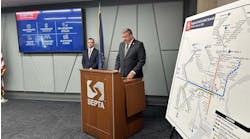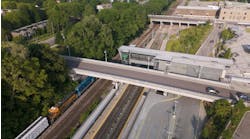Microdesk Reveals Top Trends For 2017 That Will Impact The AECO Industry
(1) Technology Evolution with BIM: Microdesk has long-embraced Building Information Modeling (BIM) and its benefits for the AECO industry. The move from 2D drawings to 3D models (and beyond), and the benefits are now well understood in the architecture industry. Looking ahead to 2017, as BIM adoption rates continue to increase, we predict we will begin to see an increase in the number and types of tools and technologies, such as virtual reality, generative design and the Internet of Things (IoT), that will be utilized for BIM modeling and management.
"In 2017, I see IoT playing a very large role," says Angela Doyle, content project manager at Microdesk. "I see it especially playing a key role in facilities management through products like ModelStream, and how designers integrate the technology into the design of a building. IoT will be able to take highly developed content and integrate it with technology that helps a building become more intelligent – that reacts and interacts to provide a better environment for its inhabitants. It will also help owners and operators save money and have building systems that are more efficient."
(2) An Intervention for Infrastructure: Democratic nominee Hillary Clinton and President-elect Donald Trump may have not agreed on much, but when it comes to the state of America's roads, bridges, waterways and infrastructure, they have one thing in common – America's infrastructure needs fixing. America saw some action at the end of 2015, when President Obama signed a $305 billion five-year infrastructure bill to fund roads, bridges, and rail lines. The bill called for spending approximately $205 billion on highways and $48 billion on transit projects over the next five years. Now that the election is over and the new President is being sworn in on January 20, Microdesk predicts that initiatives to increase projects and U.S. employment through infrastructure improvement jobs will be front and center in 2017.
"Both presidential candidates agreed that major improvement is needed for our infrastructure and we will most likely see activity and initiatives taking place around this in 2017," says Michael DeLacey, principal at Microdesk. "To date, we have seen minimal improvement in the installation of sensors and devices on structures like bridges for safety and inspection, and there is still not enough being done to train employees on how to properly design, maintain and improve the country's infrastructure. Initiatives around these two areas in particular will go a long way towards not just investing more in infrastructure repairs and improvements, but also investing in better, more sustainable infrastructure in the long-run."
(3) Hiring/Training to Stay Ahead: We predict that in 2017, we will begin to see more investment being made through education for AECO professionals and students to ensure that they can keep up with the latest software, technology, and tools. This will lead to major organizational changes on how firms collaborate amongst themselves, how they develop their employees, and how they are marketing themselves to attract the right talent.
"There are lot of layers that I see when it comes to attracting and retaining the best talent in the AECO industry," says Jeff Shloesser, architecture/engineering solutions specialist at Microdesk. "However, one particular trend I am seeing is challenges with recent graduates grasping the technology. While in school, architects and engineers are receiving a great conceptual education, but not so much when it comes to the new software tools that are being used in the industry. The challenge that we will be facing in 2017 is that AECO firms have to get creative with how they are filling roles that require technical experience. I see AECO firms investing more heavily in technology education to fill in those skills gaps."

